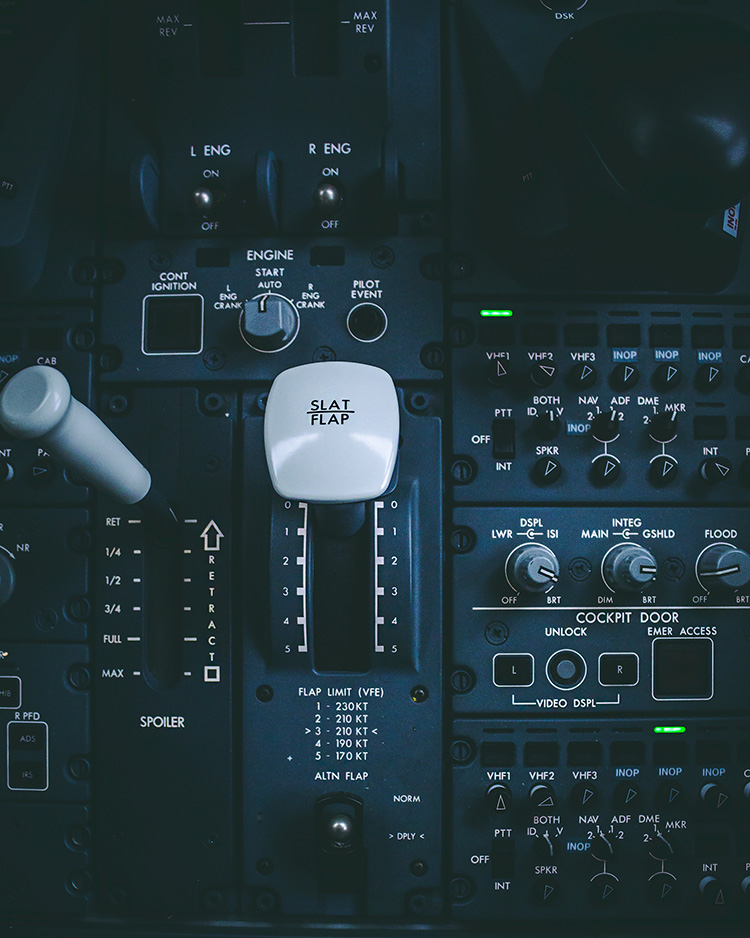Aircraft energy management during descent and landing is a difficult task for pilots. In this interview, Martin Gerber from the Swiss SkyLab Foundation, a technical pilot on the Airbus A320 and researcher in the SESAR project DYNCAT, describes the difficulties of energy management and how assistance systems and support functionalities can help pilots to perform descents and approaches as economically and quietly as possible.
DYNCAT is a two-year exploratory research project that aims at demonstrating how to take into account environmental factors like CO2 and noise when optimising 4D trajectories, enabling safer, more cost-efficient and more environmentally sustainable operations in the terminal manoeuvring area (TMA).
What is aircraft energy management?
The energy state of an aircraft is composed of potential and kinetic energy. In addition, a situation-dependent additional amount of energy is supplied via propulsion. During descent, which begins when the aircraft leaves the cruising altitude, the aim is to reduce the kinetic and potential energy in such a way that thrust remains in idle, and thus fuel consumption and noise emissions (especially on final approach) remain at a minimum. The parameters that pilots have at their command (if not restricted by air traffic control) are the time at which they leave the cruising altitude, the choice of airspeed in the descent, and depending on this, the vertical profile and various intervention options for additional energy dissipation (speed brakes, high-lift devices, landing gear).
This interaction is highly complex and poses a challenge even for very experienced pilots.
Why can energy management be difficult for pilots?
The greatest uncertainty factor in energy management for descent and approach is the knowledge of the remaining distance from the actual aircraft’s position to the runway. Very often, when leaving the cruising altitude, but also when entering the TMA, the flight crew does not really know how much flight distance still has to be covered. This is comparable to driving a car in fog, where you don't know exactly when the next stop sign is coming.
In general, ATC restrictions such as speed constraints are not instructed to the pilots in advance, but only when they have to be applied immediately. This makes it difficult to plan the descent.
In addition, imprecise wind information also plays a role, e.g. in the area of the final approach in the case of wind changes, which can complicate establishing the landing configuration.
Due to the lack of distance information to the runway, it is therefore very difficult to estimate the energy state of the aircraft and to select an optimal strategy for energy dissipation. This often leads to approaches that are either too conservative with a lot of additional thrust required. In some cases, approaches can also become unstable if the aircraft is still too fast too close to the runway, e.g. in the case of an unexpected shortcut.
How can DYNCAT improve this situation?
DYNCAT now focuses precisely on the root cause of the difficulty of energy management, on the availability of a reliable so-called distance-to-go (DTG). Taking into account other possible ATC constraints, the DYNCAT function of the Flight Management System (FMS) calculates the optimal vertical profile, the optimal time for configuration changes (high-lift devices, landing gear) and warns the pilots if the aircraft’s energy state gets too high, in order to be able to correct the state at an early stage, e.g. by means of airbrakes. This information is visualised to the pilots in an intuitive way in order to fly the best possible approach.
The real-time simulations with various airline pilots on the development simulator at Thales have successfully demonstrated that a significant improvement in energy management during descent can be achieved using DYNCAT.

This project has received funding from the SESAR Joint Undertaking under the European Union's Horizon 2020 research and innovation programme under grant agreement No 893568
